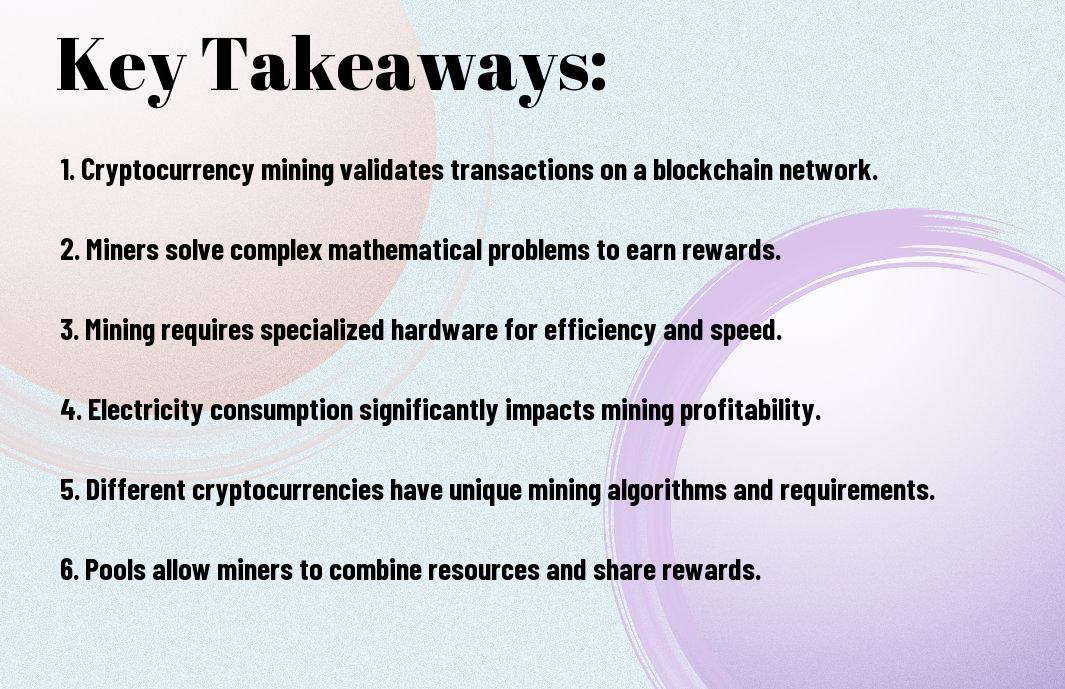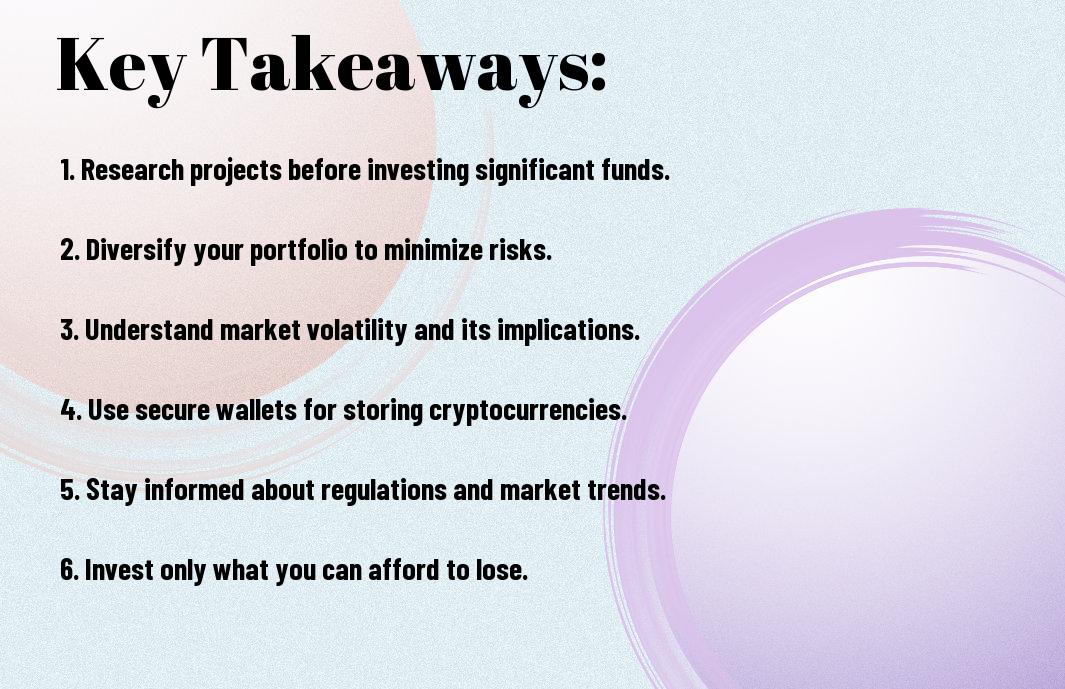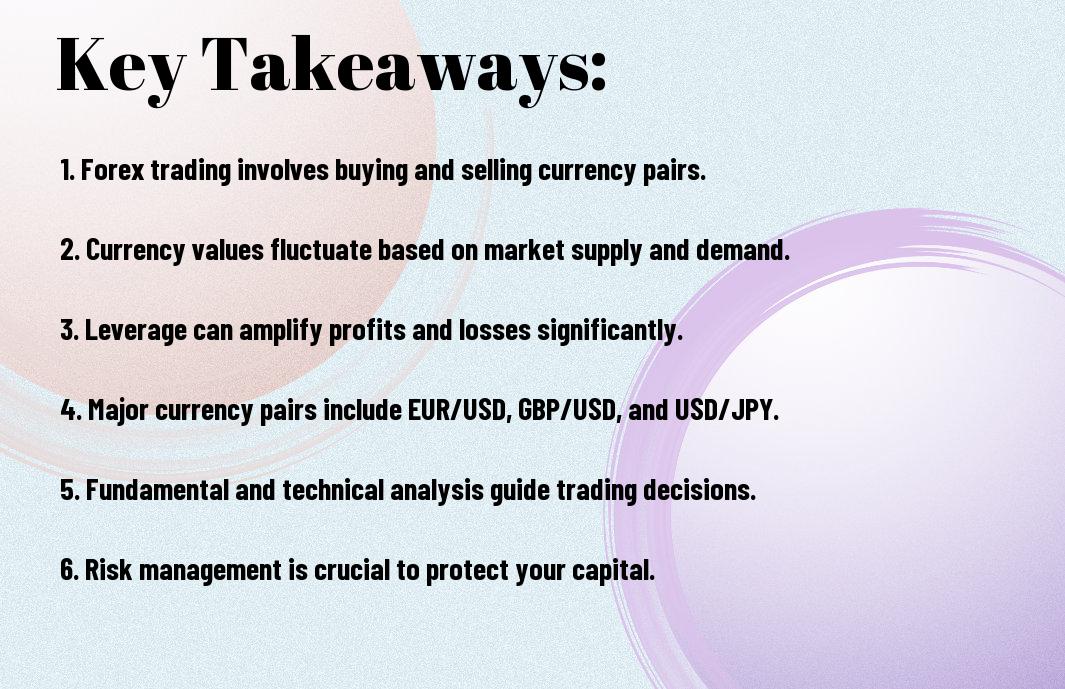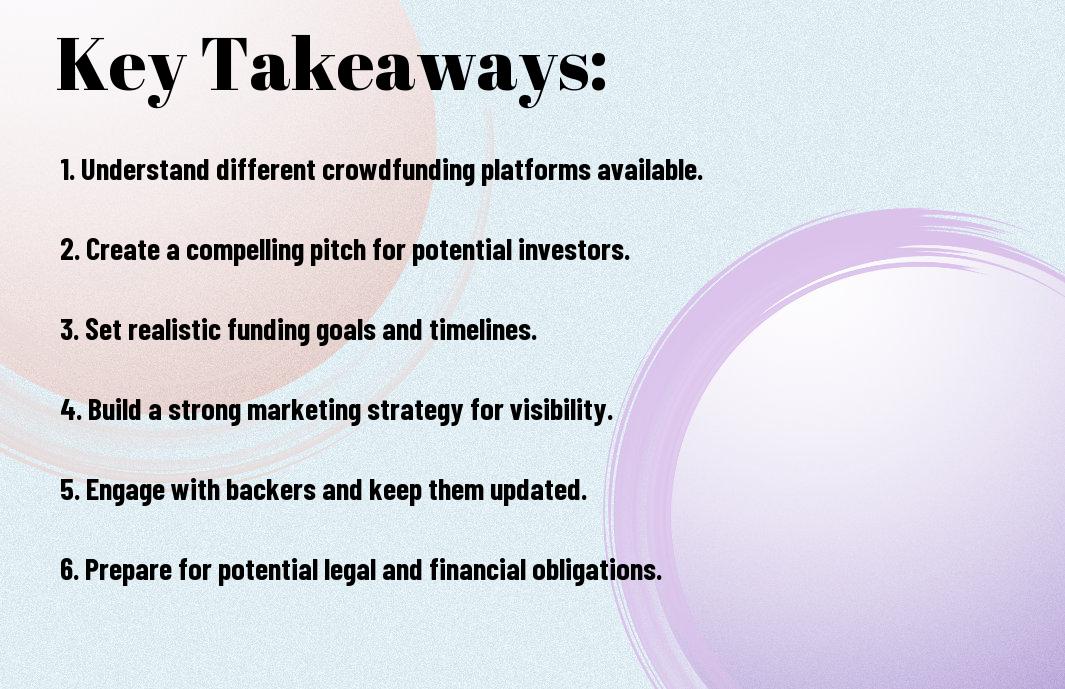Basics of value investing provide you with a solid foundation for making informed investment decisions. This strategy focuses on identifying undervalued stocks that have strong fundamentals, allowing you to potentially reap significant long-term gains. By analyzing financial statements, market conditions, and company performance, you can uncover opportunities that others may overlook. In this post, you’ll learn vital concepts and techniques to enhance your value investing approach, empowering you to make smarter financial choices.
Key Takeaways:
- Intrinsic Value: Value investing focuses on determining the true worth of a company, rather than its market price.
- Margin of Safety: Investors seek a significant gap between the intrinsic value and the market price to minimize risk.
- Long-term Perspective: Value investing is centered on a hold strategy, with the belief that the market will eventually recognize a stock’s true value.
- Fundamental Analysis: This approach emphasizes analyzing a company’s financial health, including earnings, dividends, and balance sheets.
- Market Sentiment: Value investors often capitalize on market overreactions that lead to undervalued stocks.
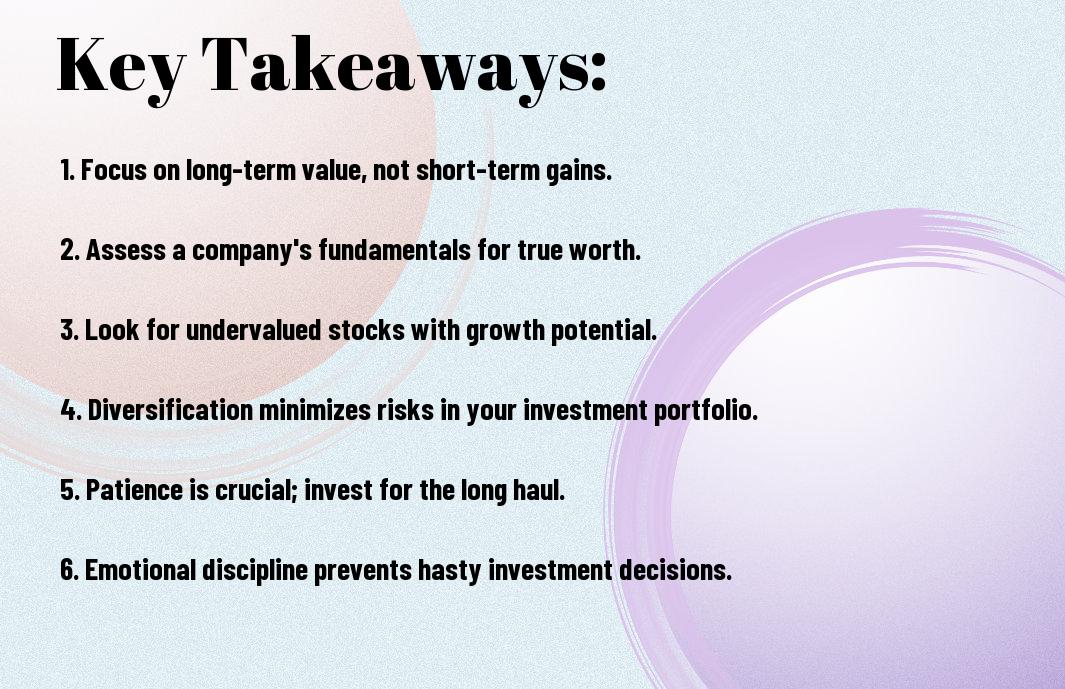

What is Value Investing?
Your journey into investing may lead you to value investing, a strategy centered on identifying undervalued stocks. At its core, value investing seeks to buy shares that are priced lower than their intrinsic worth, allowing for potential profit as the market corrects itself. This approach emphasizes patience and thorough research, aiming for long-term gains rather than quick wins.
Definition and Key Principles
Around the globe, value investing is defined by key principles such as purchasing stocks with a lower price-to-earnings ratio or those trading below their book value. This method involves a fundamental analysis of a company’s financial health, competitive position, and overall market conditions to determine the true value of the stock. The ultimate goal is to spot bargains that others might overlook.
Historical Context and Evolution
Any discussion about value investing would be incomplete without acknowledging its historical roots and evolution, tracing back to the teachings of Benjamin Graham and David Dodd in the 1930s. Their framework laid the foundation for modern investment practices, emphasizing the importance of fundamental analysis and a disciplined investment approach.
Value investing has evolved significantly since its inception, adapting to various market conditions and investor behaviors. As economies and industries developed, so did the strategies employed by value investors. You may notice that many successful investors, including Warren Buffett, built their fortunes by applying these timeless principles in new contexts, focusing on businesses with strong fundamentals and long-term growth potential. Understanding this evolution can provide you with valuable insights into how value investing remains relevant today.
Key Metrics for Identifying Value Stocks
Clearly, mastering key metrics is vital for identifying value stocks that can enhance your investment portfolio. By focusing on specific financial ratios, you can better assess a company’s true worth compared to its market price. Understanding these indicators allows you to make informed decisions about potential investments, helping you uncover opportunities that others might overlook.
Price-to-Earnings Ratio (P/E)
For value investors, the Price-to-Earnings (P/E) ratio offers insight into how much you are paying for a dollar of a company’s earnings. A low P/E ratio might indicate that a stock is undervalued or that the company is experiencing difficulties, while a high P/E could suggest overvaluation or high investor expectations for future growth.
Price-to-Book Ratio (P/B)
One important metric to consider is the Price-to-Book (P/B) ratio, which compares a company’s market value to its book value. This ratio helps you identify stocks that may be trading below their intrinsic value, potentially uncovering great investment opportunities.
To analyze the P/B ratio effectively, you should consider the context of the industry and the company’s specific circumstances. A P/B ratio below 1.0 can indicate that a stock is trading for less than its book value, which may signify an undervalued asset. However, ensure to assess the company’s financial health and competitive position, as a low P/B may also result from poor business performance or pending liabilities.
Dividend Yield
To assess how much income a stock generates for you as a shareholder, look at the dividend yield, which measures the annual dividends paid relative to the stock’s price. A high dividend yield can attract value investors seeking steady income while still benefiting from potential capital appreciation.
With a strong focus on dividend yield, you can identify companies that not only provide regular income but also demonstrate financial stability and resilience. Companies with consistent dividend payments often signal robust cash flow and committed management. However, always analyze the sustainability of those dividends, as a high yield could also indicate risks if the underlying business is struggling.
The Importance of Margin of Safety
Unlike many investment strategies that chase high returns regardless of risk, value investing emphasizes the necessity of a margin of safety. This principle serves as a buffer against unforeseen market fluctuations and errors in your analysis, allowing you to invest with greater confidence. By purchasing assets at a price lower than their intrinsic value, you reduce the risk of loss and enhance your chances of long-term investment success.
Understanding Margin of Safety
The margin of safety concept is foundational in value investing. It represents the difference between the intrinsic value of an asset and its market price, ensuring you have a protective cushion when making investment decisions. By focusing on this margin, you can safeguard your investments against market volatility and potential misjudgments in evaluating true asset value.
How to Calculate Margin of Safety
Understanding how to calculate margin of safety involves determining the intrinsic value of an investment and the price you are willing to pay for it. Subtracting the current market price from the intrinsic value gives you the margin of safety, expressed as a percentage for clarity.
Another way to further grasp margin of safety is through its calculation formula: Margin of Safety = (Intrinsic Value – Current Price) / Intrinsic Value x 100%. This percentage illustrates how much of a cushion you have when the market performs poorly or if your evaluation is off the mark. By applying this method, you can make more informed investment choices and position yourself for financial resilience in your portfolio.
Analyzing a Company’s Financial Health
Now that you understand the principles of value investing, it’s time to investigate into analyzing a company’s financial health. This involves examining key financial statements and metrics to assess the underlying value of the business. You’ll need to look at factors such as profitability, liquidity, and efficiency, allowing you to make informed decisions when investing in a company.
Income Statements and Balance Sheets
To evaluate a company’s financial performance, you must analyze its income statement and balance sheet. The income statement provides insight into revenue, expenses, and profits over a specific period, while the balance sheet offers a snapshot of assets, liabilities, and shareholder equity at a point in time. By examining these documents, you can gauge the company’s operational success and overall financial stability.
Cash Flow Analysis
Flow analysis is vital for assessing the liquidity and long-term viability of a business. It helps you determine how effectively a company generates cash from its operations, which is vital for sustaining growth and meeting obligations. You should focus on cash flow from operations, investing, and financing to get a comprehensive view of the company’s cash health.
Balance analysis of cash flow involves scrutinizing the operating cash flow, which indicates how well a company generates revenue from its core business activities. A positive operating cash flow showcases a company’s ability to maintain its daily functions without relying on external financing. Furthermore, contrasting cash flow with net income can reveal potential discrepancies between reported profits and actual cash generation, facilitating smarter investment decisions.
Behavioral Aspects of Value Investing
Keep in mind that the behavioral aspects of value investing can greatly influence your decision-making process. Understanding emotions like fear and greed, as well as cognitive biases such as overconfidence, can help you stay focused on your long-term investment strategy. By navigating these psychological factors, you can better position yourself for success in the often volatile markets.
Psychological Biases in Investing
Above all, psychological biases can distort your perception of value. Common biases such as confirmation bias, where you favor information that confirms your preconceptions, can lead to poor investment choices. By recognizing and mitigating these influences, you will strengthen your ability to make rational, informed decisions that align with value investing principles.
The Value Investor Mindset
Investing with a value-oriented mindset requires patience and discipline. You must learn to go against the crowd, focusing on intrinsic value rather than market sentiment. This approach often necessitates a willingness to endure short-term losses for the sake of long-term gains, as well as the ability to remain calm during periods of market volatility.
For instance, many successful value investors adopt a long-term perspective that allows them to weather fluctuations in stock prices. By understanding the underlying fundamentals of a company, you can better appreciate its true worth, enabling you to hold onto your investments despite market noise. Cultivating this mindset is necessary for navigating the complexities of investing and realizing your financial goals over time.
Common Mistakes to Avoid
Many value investors fall into several pitfalls that can undermine their strategies. One of the most significant mistakes is failing to conduct thorough research before making an investment decision. These errors in judgment can lead to losses and missed opportunities. Being aware of these common missteps will empower you to make informed choices in your investing journey.
Chasing Trends
Any investor who relies on short-term market trends often finds themselves in turbulent waters. Value investing focuses on long-term gains rather than momentary spikes. By pursuing trends, you risk overpaying for assets that may not deliver sustainable growth and ultimately derail your investment objectives.
Ignoring Fundamentals
About understanding the underlying value of investments, skipping the evaluation of a company’s fundamentals can often lead to costly mistakes. It’s vital to analyze financial statements, competitive position, and overall industry health to assess whether an investment aligns with your strategy.
Due to missing this fundamental analysis, many investors may purchase stocks based solely on hype or superficial indicators. This oversight can result in buying overvalued companies that lack solid financial footing. To bolster your value investing approach, ensure you consistently evaluate a company’s earnings, debt levels, and growth potential, as these factors are vital to long-term success.
To wrap up
With this in mind, understanding the fundamentals of value investing can significantly enhance your investment strategy. By focusing on undervalued assets and assessing intrinsic value, you can make informed decisions that align with your financial goals. Embracing a long-term perspective allows you to withstand market fluctuations while maximizing potential returns. As you refine your skills in value investing, you will gain greater confidence in navigating the complexities of the market, ultimately paving the way for a wealthier future.
Q: What is value investing and how does it differ from other investment strategies?
A: Value investing is an investment strategy that aims to identify undervalued stocks in the market. Investors look for stocks that are trading for less than their intrinsic value, often assessed through fundamental analysis, which evaluates a company’s financial health, earnings, and overall economic factors. This contrasts with growth investing, which focuses on stocks expected to grow at an above-average rate, regardless of their current valuation. Value investors believe that the market can misprice securities, and thus by purchasing these undervalued stocks, they can achieve considerable returns when the market corrects itself.
Q: How can an investor determine a stock’s intrinsic value?
A: To determine a stock’s intrinsic value, investors often use various valuation methods such as discounted cash flow (DCF) analysis, price-to-earnings (P/E) ratios, and comparing the stock’s book value to its current market price. DCF analysis involves forecasting a company’s future cash flows and discounting them to their present value using an appropriate discount rate. The P/E ratio measures a company’s current share price relative to its earnings per share, while the book value provides insight into the company’s net asset value. By combining these methods, an investor can gain a clearer picture of whether a stock is undervalued or overvalued.
Q: What are some common pitfalls to avoid in value investing?
A: Common pitfalls in value investing include falling into the value trap, where an investor buys a stock that appears cheap but does not recover due to underlying issues within the company. Another mistake is not conducting thorough research; relying solely on stock screeners can lead to overlooking important qualitative factors or trends within the industry. Additionally, failing to maintain a margin of safety—the principle of investing in a stock only when its price is significantly below its calculated intrinsic value—can expose investors to unnecessary risks. Patience is also key, as value investing often requires holding onto stocks for an extended period before their true value is recognized by the market.
